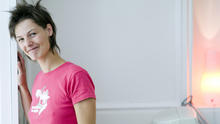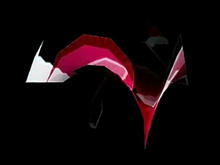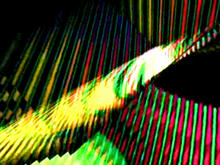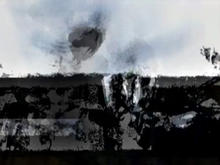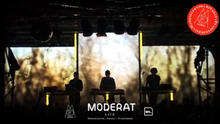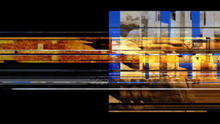Chronomops
(2005)by Tina Frank and accompanied by music from General Magic opens up a shimmering, colorful space that is simultaneously an excess of color, frenzy of perception, and pop carousel.
The doors of perception, electronic style.
Tina Frank's Chronomops opens doors to truly different dimensions: different than digital art's reductionist studies so common today, different than the serially laid out minimalist images, and different than the omnipresent filtering and layering experiments.
Chronomops opens up a shimmering, colorful space that is simultaneously an excess of color, frenzy of perception, and pop carousel. An abstract architecture of vertical color bars is set in endless rotation, whereby the modules and building blocks fly around themselves—and the entire system likewise rotates. The forced movement forms a digital maelstrom whose suction pulls the observer deep into it.
A system surfacing as though out of a void, steadily plunging through its own dynamic into new excesses of mobility, while adventurously hopping axes, temporarily dissolving into two-dimensional stripes, then lapsing again into a prismatic staccato of light and color, tending towards a 90 degree angle, sideward— leaving an extreme dizzying feeling in its wake. Chronomops, accompanied by music from General Magic, which is also composed as a slip stream, thus shows what the pop psychedelics always knew to be true: that the "other" side looms right around the corner of the perfect groove, a labyrinth of colors and forms set in irregular motion, which merely has to be raised from its invisibility and liberated from its incomprehensible state. Electronic music’s inner life has seldom appeared so colorful and captivating.
(Christian Höller, translation by Lisa Rosenblatt)
Source: Tina Frank's website


